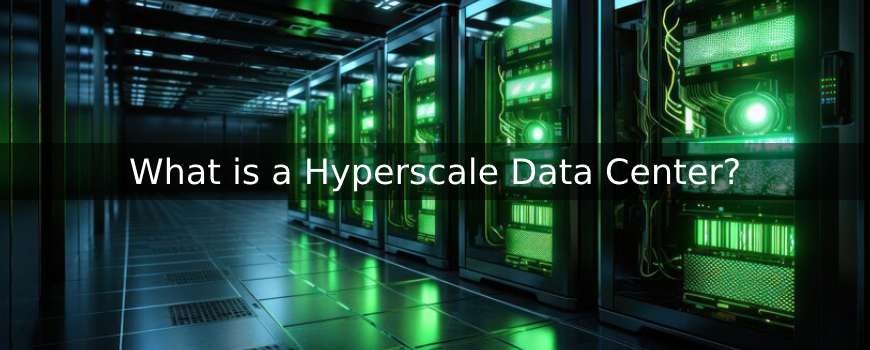Experienced and Reliabile Hosting Service Provider! Switch to Cloudies365 and Save Upto 50% ![]()
What is a Hyperscale Data Center?

A hyperscale data center is a huge infrastructure setup intended to handle substantial compute and data demands. Thousands of computers and data storage units may typically accommodated in these centers to provide the highest levels of scalability, dependability, and efficiency.
Modular, containerized construction methods used to build hyperscale data centers, making maintenance and expansion simple. In order to guarantee continuous service, they also feature numerous backup systems and failover procedures, making them extremely redundant.
How does a Hyperscale Data Centre Work?
In this current market, Hyperscale data centers made to ease out your work. They known to massive facilities designed to provide scalable and efficient computing resources. This will help you in maintaining the demands of modern applications and services. Unlike traditional data centers, hyperscale can bring about serious changes in your system. These changes can later lead to growth of your business. This will equally bring distinctions in the working management and scale up your business.
Thousands of servers built for distributed computing architectures are the backbone of hyperscale data centers. Usually, these computers arranged into clusters, with each cluster managing a particular workload, like web traffic or data storage.
Hyperscale data centers utilize specialized software to manage these server clusters so they may run as efficiently as possible. The load-balancing algorithms built into this software divide up the workload among several servers so that no one overworked. Additionally, it has virtualization capabilities that maximize resource usage by enabling the operation of several virtual servers on a single physical server.
To maximize their efficiency, hyperscale data centers also employ cutting-edge networking technologies like network function virtualization (NFV) and software-defined networking (SDN). These technologies offer more flexibility in network architecture and enable more effective data traffic routing.
What are the benefits included in Hyperscale Data Centres?
Just like every other server present in the market, Hyperscale Data Centre has its own benefits by which it can serve you. Some of the benefits are:
- Cooling Efficiency: Cooling systems in data centers is one of their biggest costs. In order to lower these cooling costs, hyperscale data centers maximize airflow by directing cooling power toward high-intensity workloads. In order to ensure that hot air only flows in one direction and lower cooling costs, they also recover and recycle heat.
- Balanced Workload: With Hyperscale data servers, there is no particular threat of overheating of your desktop. It will ensure that a single server does not become overwhelmed with its process and cause issues.
- Enhanced Economical Power: With the massive size and data that comes with a particular business, hyperscale data center can use economies to reduce the workload and scale up the business.
- Efficient Energy: Even though it has a vast size and it consumes enormous amounts of electricity, hyper scale data centers are more efficient than any typical data centers. They reduce your consumption and cost.
Suggested Reading: Top Technology Trends Transforming Data Centers
How many Hyperscale Data Centers are There?
Since 2015, the amount of Hyperscale data Centers used has doubled. Currently about 700 Hyperscale data centers used worldwide. With all the given benefits, it is obvious that there is a steady increase in the number of Hyperscale Data Centres. It has also increased the demand for cloud services, big data analytics, and other data-intensives as well.
Hyperscale Data Center or Enterprise Data Center? What’s the Difference?
Any design that can adapt to rising workload demands and create room for exceptional agility and scalability referred to as “hyperscale.”
Hyperscale data centers are able to adjust their size to accommodate any necessary workload. IT teams, for instance, may simply scale their platforms to the edge of the network and add more hardware and processing power. In a space of less than 10,000 square feet, hyperscale data centers can host over 5,000 hyperscale servers; some can even hold hundreds of thousands of servers.
Enterprise data centers, on the other hand, are more conventional, smaller data centers created to serve the needs of a single firm. They built to offer top security, dependability, and uptime for vital applications and data, and they normally hold several hundred to a few thousand servers and storage devices. Enterprise data centers often owned and operated by the company that developed them, and they constructed using more conventional architectures.
Suggested Reading: What do you understand about Hypervisor?
The price point is another important distinction between enterprise and hyper-scale data centers. The goal of hyperscale data centers’ very economical design is to maximize productivity while lowering operating costs. However, because of their smaller size and stricter security standards, enterprise data centers usually have greater operating costs.
Conclusion
Large, scalable, and flexible computing infrastructures that are capable of handling enormous volumes of data, processing power, and storage known as hyperscale data centers.
Organizations that employ Virtual Desktop Infrastructure (VDI), which needs a lot of processing power, storage, and network capacity to provide virtual desktops to end users, profit from hyperscale data centers.
As cloud computing and virtual data centers (VDI) become more widely used, hyperscale data centers will remain essential in helping businesses meet their IT objectives while cutting expenses and enhancing productivity.